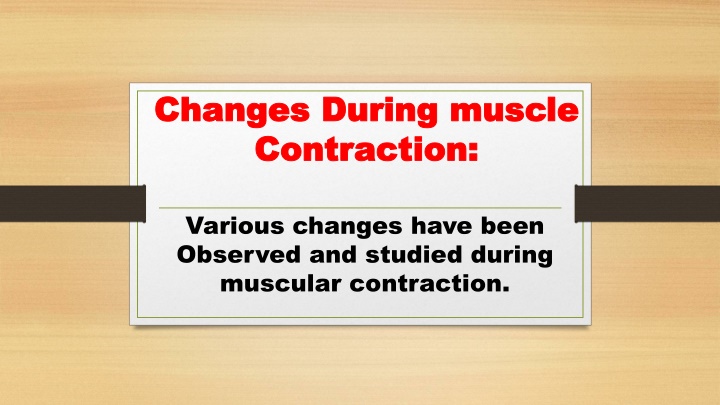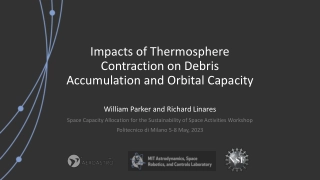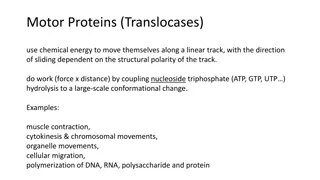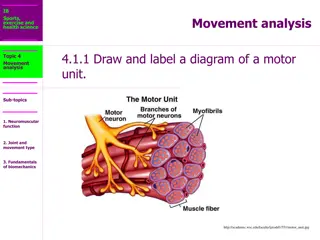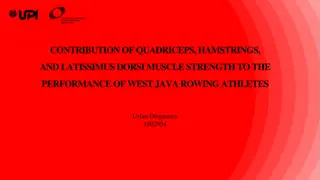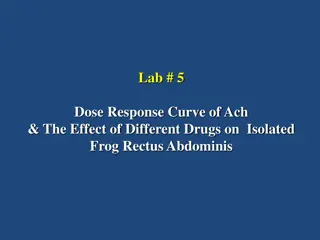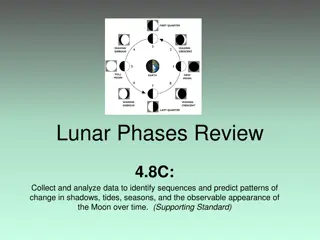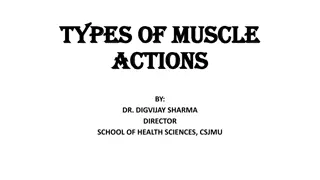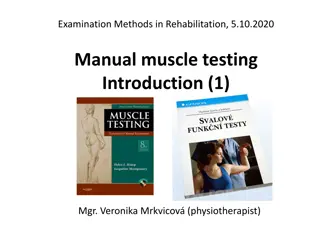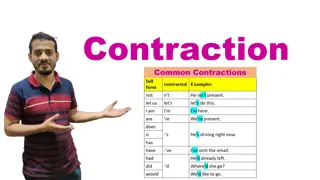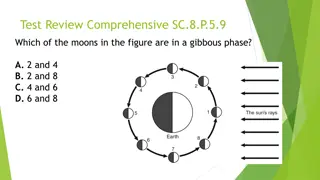Muscle Contraction Phases and Responses: A Comprehensive Overview
Various changes observed during muscle contraction include the latent period, contraction phase, and relaxation phase. Muscle twitch, tetanus, and their durations are important phenomena in understanding muscle physiology.
Download Presentation

Please find below an Image/Link to download the presentation.
The content on the website is provided AS IS for your information and personal use only. It may not be sold, licensed, or shared on other websites without obtaining consent from the author.If you encounter any issues during the download, it is possible that the publisher has removed the file from their server.
You are allowed to download the files provided on this website for personal or commercial use, subject to the condition that they are used lawfully. All files are the property of their respective owners.
The content on the website is provided AS IS for your information and personal use only. It may not be sold, licensed, or shared on other websites without obtaining consent from the author.
E N D
Presentation Transcript
Changes During muscle Changes During muscle Contraction: Contraction: Various changes have been Observed and studied during muscular contraction.
Muscle Twitch: Muscle Twitch:- - The response of a muscle to single short stimulus, such as an electric shock, is known as Twitch. It can be recorded by kymograph. A twitch can be divided in to three successive phases; * * Latent phase or period :- It is brief time interval between the point of stimulation and actual starting of response i.e. Contraction phase. The duration of the latent period varies with the species, type of muscle, temprature and internal condition of muscle.
Latent period is due to time taken: 1. For propagation of impulse from the point of stimulation to the neuromuscular junction and hence to the sarcolema. 2. For initiation of contraction. It lasts about 10 milliseconds (0.01 sec)
*Contraction phase: It is the time interval in which It is the time interval in which the muscle reaches the peak the muscle reaches the peak of contraction and performs of contraction and performs work. work. i.e. From the beginning of the i.e. From the beginning of the contraction up to the contraction up to the maximum contraction. maximum contraction. It lasts about 40 milliseconds It lasts about 40 milliseconds (0.04 sec). (0.04 sec).
* * Relaxation phase: Relaxation phase: It is the longest of the three phases, It is the longest of the three phases, it lasts about 50 milliseconds (0.05 sec) about 50 milliseconds (0.05 sec). . It is indicated by the downward tracing in the It is indicated by the downward tracing in the myogram myogram ( ( kymogram kymogram) ) Kymogram Kymogram graph showing a twitch contraction. graph showing a twitch contraction. During this phase, the muscle return to it s During this phase, the muscle return to it s original length. original length. it lasts
Tetanus: Tetanus:- - If the muscle fibre is stimulated before it relaxes, If the muscle fibre is stimulated before it relaxes, for a second time, it can contract again. If we for a second time, it can contract again. If we continue closely spaced stimuli, we get a smooth continue closely spaced stimuli, we get a smooth sustained contraction, called a sustained contraction, called a tetanus contraction contraction. . Whose tension may be much greter than that Whose tension may be much greter than that developed by the single twitches. developed by the single twitches. tetanus or or tetanic tetanic
If frog muscle is stimulated at a rate of 20 to 30 If frog muscle is stimulated at a rate of 20 to 30 stimuli per second, the muscle can only partly relax stimuli per second, the muscle can only partly relax between stimuli. As a result, the muscle maintains a between stimuli. As a result, the muscle maintains a sustained contraction called sustained contraction called incomplete tetanus Increased stimuli at a rate of 35 to 50 stimuli per Increased stimuli at a rate of 35 to 50 stimuli per second result in second result in complete tetanus complete tetanus, that lacks even partial relaxation. partial relaxation. incomplete tetanus. . , that lacks even
Summation: Summation:- - If a second stimulus is applied to muscle If a second stimulus is applied to muscle that is still in the contraction phase, second that is still in the contraction phase, second contraction is added to the first and results contraction is added to the first and results in the greater shortening of the muscle than in the greater shortening of the muscle than caused by a single stimulus. This is the caused by a single stimulus. This is the summation summation. .
Fatigue:- When repeatedly stimulated, the muscle loses its irritability and When repeatedly stimulated, the muscle loses its irritability and becomes gradually less excitable and ultimately ceases ( stop) to becomes gradually less excitable and ultimately ceases ( stop) to respond. This phenomenon is called respond. This phenomenon is called fatigue So it can be defined as the inability of muscle to do further work. So it can be defined as the inability of muscle to do further work. The fatigue may be due to; The fatigue may be due to; 1. 1. Exhaustation of sources of energy of the muscle. Exhaustation of sources of energy of the muscle. 2. 2. Accumulation of the end products of chemical reactions such as Accumulation of the end products of chemical reactions such as lactic acid, carbon dioxide, keton bodies. lactic acid, carbon dioxide, keton bodies. 3. 3. Decrease of local synthesis of acetylcholine during prolonged Decrease of local synthesis of acetylcholine during prolonged exercise. exercise. fatigue. .
Rigor mortis: Rigor mortis:- - This is the muscular contraction that take place after death. This is the muscular contraction that take place after death. It is well known fact that soon after death the body passes in It is well known fact that soon after death the body passes in to rigor mortis or the to rigor mortis or the so so- - called stiffening of death. called stiffening of death. It shows the following changes; It shows the following changes; 1. 1. Loses the excitability. Loses the excitability. 2. 2. Shortens in length. Shortens in length. 3. 3. Increases in thickness. Increases in thickness. 4. 4. Becomes viscous and loses translucency. Becomes viscous and loses translucency. 5. 5. Becomes distinctly acidic ( PH Becomes distinctly acidic ( PH- -5.8). 6. 6. The muscle gives off carbonic acid. The muscle gives off carbonic acid. 5.8).
The time of onset is not the same in all The time of onset is not the same in all animals. On an average rigor mortis starts in animals. On an average rigor mortis starts in the second hour and is completed in three the second hour and is completed in three hours after death. hours after death.
All All- - or none law: or none law:- - The response of a muscle fibers is independent of the type, or The response of a muscle fibers is independent of the type, or strength of the stimulus. strength of the stimulus. It means that if a single muscle fibers contracts at all, it will It means that if a single muscle fibers contracts at all, it will contract to its maximum. contract to its maximum. This law is not applicable for the whole muscle, which is This law is not applicable for the whole muscle, which is made of several fibres. made of several fibres. In this case, as the strength of the stimulus is increased, In this case, as the strength of the stimulus is increased, more and more muscle fibers will be affected and the degree more and more muscle fibers will be affected and the degree of contraction will be raised and a stage will be achieved of contraction will be raised and a stage will be achieved where there is no further rise. This is all or none law for the where there is no further rise. This is all or none law for the whole muscle. whole muscle.
Isometric and Isotonic Isometric and Isotonic Contraction: Contraction:- - The force exerted by a contracting muscle on an The force exerted by a contracting muscle on an object is known as muscle Tension and the force object is known as muscle Tension and the force exerted on the muscle by the object is the load. exerted on the muscle by the object is the load. The muscle tension and load are opposing forces. The muscle tension and load are opposing forces. Whether or not contraction produces movement Whether or not contraction produces movement depends on the magnitude of the tension produced by depends on the magnitude of the tension produced by the muscle. the muscle.
When a muscle develops tension but does not change length, When a muscle develops tension but does not change length, then the contraction is said to be then the contraction is said to be isometric length length). Isometric literally means same length , where iso Isometric literally means same length , where iso- - means the same and metric refers to lenght same and metric refers to lenght In contrast, a tension on the muscle remains constant but In contrast, a tension on the muscle remains constant but the muscle length is changing is said to be the muscle length is changing is said to be Isotonic contraction contraction ( ( constant tension constant tension). Isotonic Isotonic literally means 'same tension,' where literally means 'same tension,' where 'iso' 'the same' and 'the same' and 'tonic' 'tonic' refers to 'tension or force refers to 'tension or force When a muscle is stimulated, first isometric contraction When a muscle is stimulated, first isometric contraction occurs, then Isotonic contraction follows, that is, tension is occurs, then Isotonic contraction follows, that is, tension is developed first then the muscle shortens. developed first then the muscle shortens. isometric ). ( ( constant constant means the Isotonic ). 'iso'- - means means
